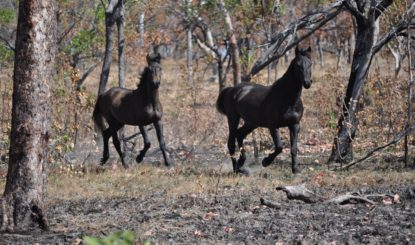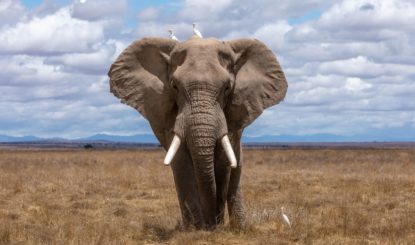Fire Alarm on Bonrook: The Importance of Early Containment of Bushfires
A bushfire threatened the rangelands of Bonrook in August. With bone-dry grass, strong southeasterly winds and limited resources, the fire risked spreading uncontrollably. Thanks to a targeted backburning strategy, however, I was able to contain it — protecting the landscape, animals and people from the advancing flames.
The morning began as so many do here at Bonrook. The sun had just risen above the hills, and the air was still cool. In the hour before work starts, I like to sit with a cup of coffee in front of my laptop, check the weather report from the Bureau of Meteorology and take a quick look at the bushfire app.
That day, three small purple stars immediately caught my eye — an indicator of a fire between one and six hours old, only about eight kilometres southwest of the Homestead. Without hesitation, I jumped into the station’s fire truck and raced out to assess the situation.
Danger from Rapidly Spreading Flames
I found the bushfire quickly. August, the end of the dry season — not a good combination! The grasses and shrubs at Bonrook are bone-dry at this time of year, and the southeasterly winds whip across the land. Under such conditions, a fire can spread with alarming speed. Since we don’t have the resources on site to completely extinguish a fire, the key is to control it.
Fortunately, the old North–South Highway runs through our property. The roughly four-metre-wide concrete road acts as a perfect firebreak. Equally helpful are areas I burned off earlier in the year during controlled fire management efforts. When the flames reach these burned patches, they die down quickly. Still, large flames driven by the wind can easily jump even a wide firebreak.
Backburning Strategy Saves Lives
So I carried out a controlled backburn to stop the advancing fire: Using a drip torch, I ignited sections of the break approx. 1km at a time and then drove back to monitor the burn and checking that everything was burning as planned before continuing.
Working this way, I burned about six kilometres, section by section. It took eight hours to fully encircle the fire — a slow but highly effective process that demands complete focus. This counterfire strategy of controlled burning is essential to protect the land, wildlife and people from the spread of bushfires.
Once the backburning is complete, the areas must be continuously monitored. For days afterward, I checked every morning and evening to ensure that smouldering or dead trees weren’t threatening the firebreak, pushed them back into the burn zone and prevented sparks from flying. Only after a week could I finally say: It’s over. We’re safe.
This was the first late dry-season fire in about five years. The burned area covered roughly eight to nine square kilometres. Had I not stopped it, it could easily have grown to 150.
Living with Fire
Since leaving school, I’ve been involved in firefighting — it’s a thread that has run through my entire life. Before coming to Bonrook, I volunteered with Bushfires NT, and I’ve now served as a volunteer firefighter for a total of twelve years.
Today, I’m the Fire Captain of the Pine Creek FERG (Fire & Emergency Response Group), which operates under the Northern Territory Fire & Rescue Service. I’ve been part of FERG for nearly ten years and completed the training to become a Volunteer Firefighter Level 1.


